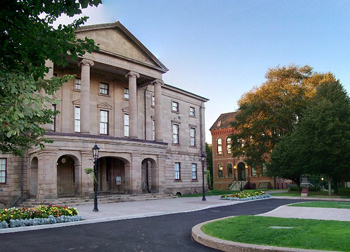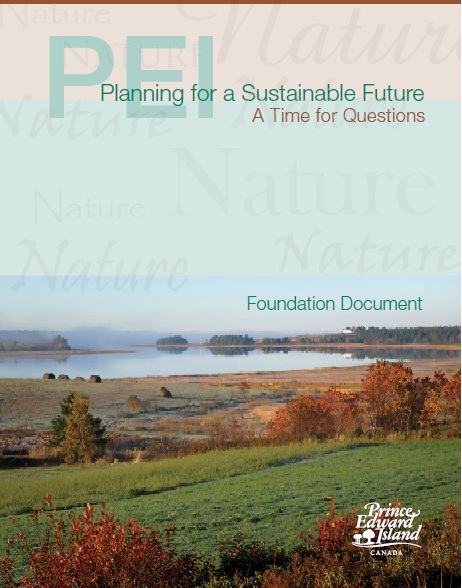
Planning for a Sustainable Future
Back in the Eighties, Prince Edward Island was one of the first provinces to come up with a conservation strategy, and it was a pretty good one too. Now, some thirty years later, PEI is starting work on a sustainable development strategy with the release of a discussion paper, “Planning for a Sustainable Future” in July 2012. The PEI Environmental Advisory Council has since released a follow-up paper on Principles of Sustainable Development.
The discussion paper solicits comments and suggestions within a range of environmental and land use issues:
- Environmental Stewardship
- Environmental Stewardship
- Diversity of Life
- Natural Capital and the Valuation of Ecosystem Goods and Services
- Safe Water and Clean Air
- Climate Change
- Land Use and Soil Management
- Land Management
- Soil Quality
- Urban Built Environment
- Energy Use
- Waste and Toxic Materials
- Soil Waste
- Pesticides
The paper is more a foundation of an environmental protection strategy than of sustainable development in that it does not include a discussion of development options.
Climate Change
PEI’s Climate Change Strategy was released in November 2008. The 47 action items put forward in the Strategy were designed to:
- lower greenhouse gas (GHG) emissions,
- enhance carbon sinks,
- help people prepare for the impacts of climate change, and
- increase public awareness.
State of the Environment Reports
PEI has been producing State of the Environment reports since 2003. The latest one is from 2010 (pdf version here). It tracks the following indicators, which closely mirror the categories in the “Planning for a Sustainable Future” paper above:
Drinking Water Quality
Measured as the concentration of nitrate and the presence of E. coli bacteria in private water wells, as well as the number of homes serviced by central water and wastewater systems and pesticides occurence in groundwater.
Surface Water Quality
Measured as the number of anoxic events in estuaries, the amount of nitrate in four test rivers, the pH of surface water, the percentage of total classified shellfish growing areas that are not open for harvest and siltation in surface waters.
Climate Change
Measured as the amount of greenhouse gas emissions produced in the province and the rise in sea level at Charlottetown.
Energy Use
Measured as the average monthly household use of electricity, gasoline consumption and the round wood consumption for residential heating.

Air Quality
Measured as the acidity of rain, particulate matter content and ozone level.
Biodiversity
Measured as the change in forest communities, the change in forest covertypes, the amount of land protected under the Natural Areas Protection Act and the number of species in Prince Edward Island.
Pesticides
Measured as the number of reported fish kills in rivers and amount of pesticide sold.
Waste Management
Measured as the percentage of solid waste diverted from disposal by burial or incineration.
Environmental Stewardship
Measured as compliance with regulations requiring inspection and tagging of home oil tanks, the number of community watershed planning projects completed or in development, the number of passengers using the public transit in Charlottetown and participation in fishing, hunting and trapping.
Soil Quality
Measured as the frequency of row crops, the area of row crops under engineered soil conservation management structures, the organic matter in soil and the area of land in certified organic production.
Land Use
Measured by the area of land and number of farms with valid Environmental Farm Plans, the percentage of agricultural land cultivated for crop production and the area of forest converted to non-forest uses.
